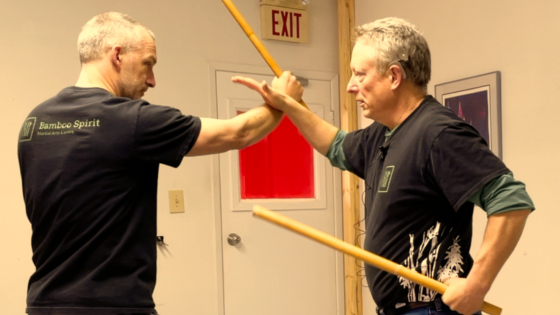Complicated Drills Are A Waste Of Time!
Estimated reading time: 4 minutes
I recently watched a martial arts video on YouTube where an instructor demonstrated a rather complicated drill. In this post, I discuss the downside of overly complicated drills.
I understand that I don’t have all the information about the video. The instructor may have performed the drill for demonstration purposes. For this post, let’s assume that the instructor teaches this drill to his students.
No, I won’t name the instructor. That’s not the point of this post. I want to focus on the downsides of complicated drills.
Aside: GM Bobby Taboada once told me he advised an FMA teacher to simplify his drills. According to GM Bobby, he relayed to this instructor that his drills were a wee bit too complex. He counselled this teacher to simplify his drills. “Just keep it simple,” said GM Bobby.
Likewise, the late Professor Remy A. Presas often exclaimed, after demonstrating a technique, “See? It’s very simple!” It took us a while to realize that he was a genius at teaching. He taught simple techniques and simple sequences. Heck, he taught simple everything! His counters were so simple that we would laugh at our stupidity in not seeing the answer right before us. “See, it’s very simple!”
His teaching profoundly influenced many of his students, including yours truly.
Given this background, I am disappointed anytime I see a complicated drill being demonstrated on YouTube. Speaking of which, I did a short video on this topic eight years ago.
In this video, I recreated an unrealistic stick-locking sequence I viewed on YouTube. To say the least, it did not go over well with me. Keep it simple, stupid.
The video that I recently viewed had an incredibly complicated training sequence. I was familiar with many of its components. I felt the drill could have been broken down into three drills. As I said earlier, I am not sure of the context of this drill, whether it was devised for video purposes or if it’s a drill taught to the students.
Complicated martial arts drills have several downsides:
Drawback #1: Complex drills in martial arts can require significant time to learn, memorize, and practice. While it’s important to challenge oneself and strive for improvement, these complex drills may not always offer the most practical benefits to students.
Drawback #2: One of the drawbacks of overly complicated drills is their limited real-world applicability. Martial arts training should ideally prepare students for self-defence or combat situations. Complex drills will not give the students what they need: practical self-defense skills. Instructors and students alike need to evaluate each drill.
Drawback #3: Next, the emphasis on complex drills in training is a waste of time. Time spent perfecting intricate movements might be better used for developing other important aspects of martial arts, such as strength, speed, or conditioning.
Drawback #4: Furthermore, the constant struggle with complicated drills can cause frustration and demotivation for some students. Being stuck can be disheartening and may reduce a student’s enthusiasm. Simple drills are the way to go.
As GM Bobby Taboada and the late Professor Remy Presas advised, “Keep it simple.”
Watch how the Professor taught the 6-Count Drill in the video below. It consists of three moves for each person, totalling six, hence the name.
Note how he delights in the drill’s simplicity and effortlessly switches between the stick and empty-hand versions. Simple stuff.
To instructors reading this blog, keep your drills simple. Your students will progress faster and be happier, to boot! Don’t bog them down with complicated and frustrating drills.
To students struggling with a complicated drill, RAISE YOUR HAND!
You have a few choices. The first option is to ask your teacher to break the drill down into its parts.
The second option is to ask whether the instructor can simplify the drill.
Yet another option is to request one one-on-one training with the instructor to work on the drill.
Regardless of your approach, you will give valuable feedback to your teacher! Many instructors do not want to frustrate their students and may not realize they are doing so. Hence, feedback is incredibly important.
To summarize, simplicity is incredibly important, both for the instructor and the student. Two-way communication is key. Any drill should be based on simple moves and easily digested by the student.
Lastly, please buy me a coffee or a beer!
On a serious note, please consider supporting this blog because I need your help defraying the increasing expenses associated with the blog/website.
A huge thank you in advance!
Make a one-time donation
Make a monthly donation
Make a yearly donation
Choose an amount
Or enter a custom amount.
Your contribution is appreciated.
Your contribution is appreciated.
Your contribution is appreciated.
DonateDonate monthlyDonate yearlyShare this post:
- Click to share on Twitter (Opens in new window)
- Click to share on Facebook (Opens in new window)
- Click to share on LinkedIn (Opens in new window)
- Click to share on WhatsApp (Opens in new window)
- Click to share on Nextdoor (Opens in new window)
- Click to share on Pinterest (Opens in new window)
- Click to email a link to a friend (Opens in new window)
Brian Johns
Related Posts
2 Comments
Leave a Reply Cancel reply
Categories
- Arnis/Kali/Eskrima (113)
- Book Review (8)
- DVD Reviews (3)
- Guest Post (4)
- Inspiration (24)
- Martial Arts (99)
- My story (92)
- Safety (14)
- Tips & tricks (6)
- Uncategorized (3)
- YouTube Videos (8)





[…] “Nah, it can’t be THAT simple!” But, as I later learned, it IS that simple. The more I practice and study martial arts, the simpler it seems. The more I practice, the more value that I see in simple techniques rather than fancy or complex sequences. […]
[…] this is an issue that I see in FMAs. Too many like to get into complicated moves and sequences. Look, I get it. I did that in my younger days. Guilty as charged! But at my age, it […]